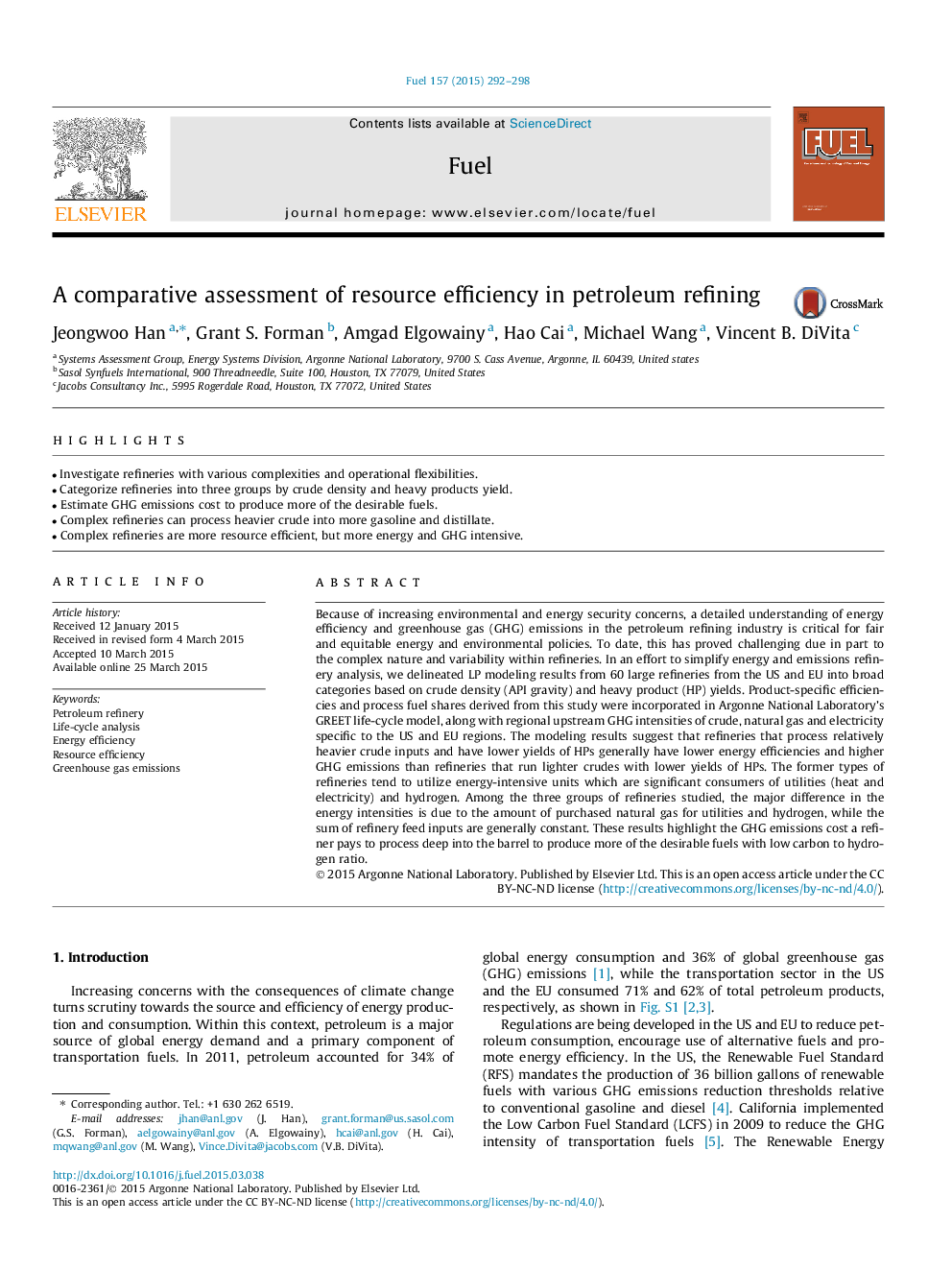| Article ID | Journal | Published Year | Pages | File Type |
|---|---|---|---|---|
| 6635359 | Fuel | 2015 | 7 Pages |
Abstract
Because of increasing environmental and energy security concerns, a detailed understanding of energy efficiency and greenhouse gas (GHG) emissions in the petroleum refining industry is critical for fair and equitable energy and environmental policies. To date, this has proved challenging due in part to the complex nature and variability within refineries. In an effort to simplify energy and emissions refinery analysis, we delineated LP modeling results from 60 large refineries from the US and EU into broad categories based on crude density (API gravity) and heavy product (HP) yields. Product-specific efficiencies and process fuel shares derived from this study were incorporated in Argonne National Laboratory's GREET life-cycle model, along with regional upstream GHG intensities of crude, natural gas and electricity specific to the US and EU regions. The modeling results suggest that refineries that process relatively heavier crude inputs and have lower yields of HPs generally have lower energy efficiencies and higher GHG emissions than refineries that run lighter crudes with lower yields of HPs. The former types of refineries tend to utilize energy-intensive units which are significant consumers of utilities (heat and electricity) and hydrogen. Among the three groups of refineries studied, the major difference in the energy intensities is due to the amount of purchased natural gas for utilities and hydrogen, while the sum of refinery feed inputs are generally constant. These results highlight the GHG emissions cost a refiner pays to process deep into the barrel to produce more of the desirable fuels with low carbon to hydrogen ratio.
Keywords
Related Topics
Physical Sciences and Engineering
Chemical Engineering
Chemical Engineering (General)
Authors
Jeongwoo Han, Grant S. Forman, Amgad Elgowainy, Hao Cai, Michael Wang, Vincent B. DiVita,
